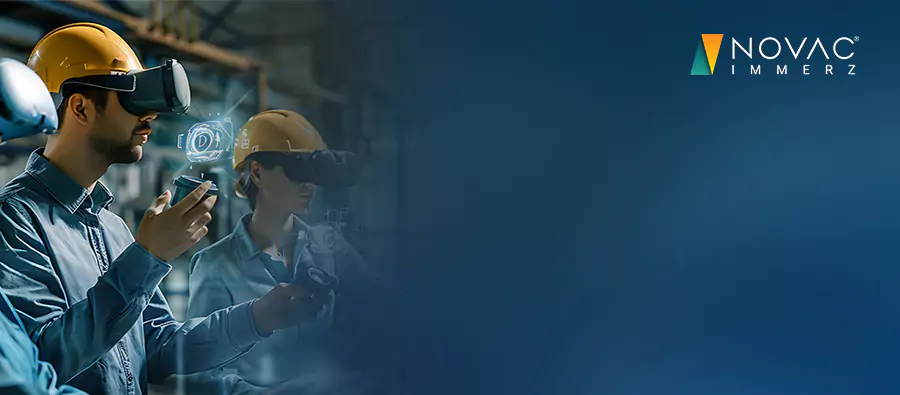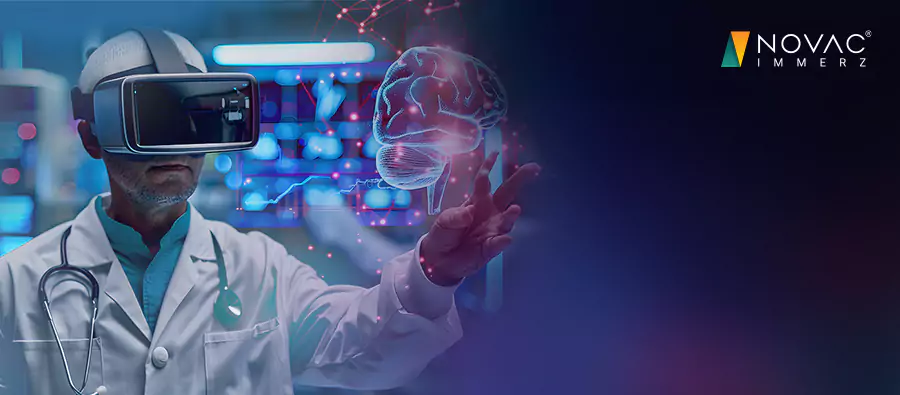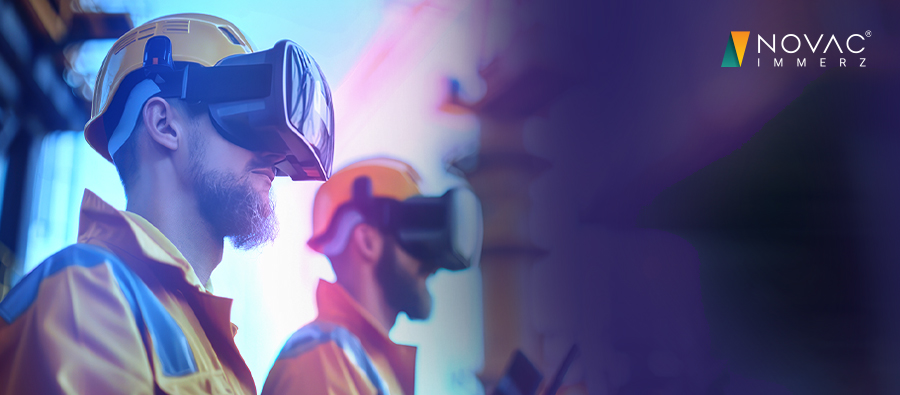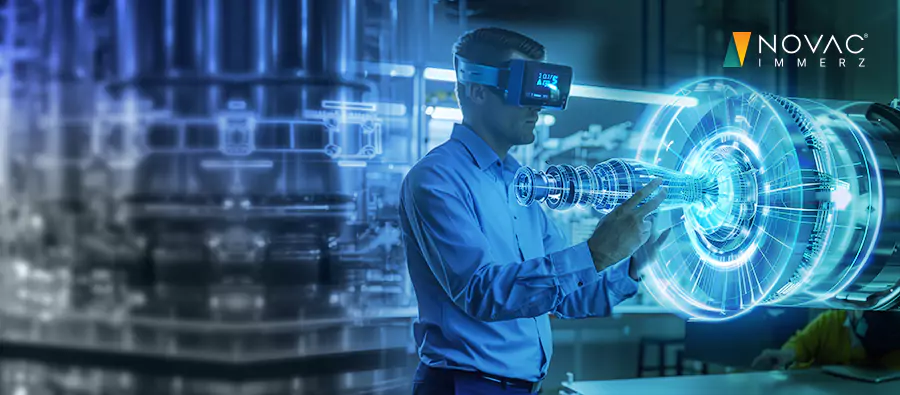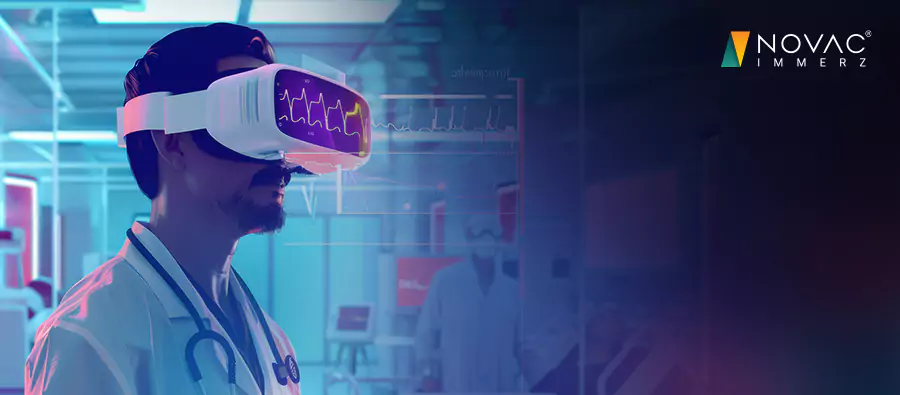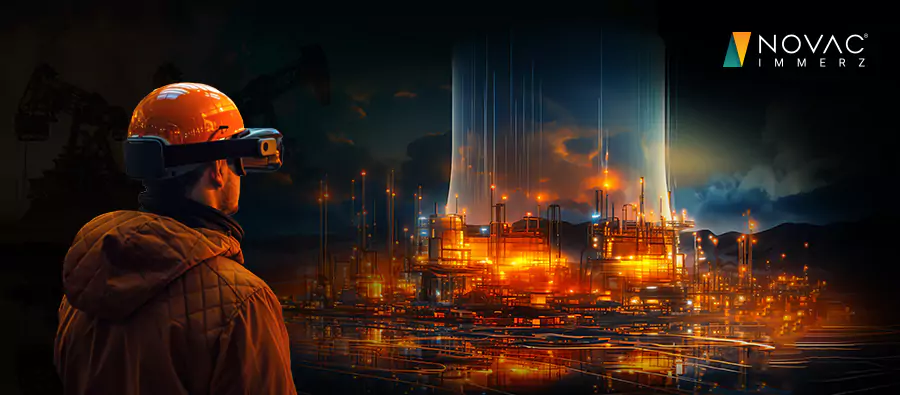Overview
The rise of Augmented Reality (AR) and Virtual Reality (VR) is fueling a new era in the education industry.
The global AR and VR in Education is expected to grow at a high rate of 20.26% between 2024 and 2033.
Immersive technologies offer an inclusive experience by removing physical barriers to learning, resulting in a personalized and engaging experience for students. With a promising future for AR VR in Education Industry, Novac Immerz is a pioneer in offering Immersive Learning solutions to engage educators and learners.

The Impact of AR VR Solutions on Modern Education
A 3D learning environment is created for educators and students to provide an interactive learning experience. They can meet in the digital space using headsets. Teachers can develop virtual landscapes according to their lesson plans. They can use simulations to teach concepts to students. Our Augmented Reality Solutions improves learning outcomes by enabling learners to retain information better.
Meta classrooms include assessment and collaboration tools. Teachers can monitor learners' progress using in-built whiteboards, screen-sharing options, a webcam, and messaging tools.
Schools and universities can use our Virtual Reality Solutions to establish virtual campuses and connect directly with students. They can use digital worlds to conduct conferences and orientation sessions. A virtual campus will simulate a physical environment with presentation tools, private meeting spaces, collaborative boards, and breakout spaces.
Instead of listening to lectures and completing tasks, offering a gamified experience will trigger the competitive spirit amongst students. A simulated environment is used for conducting tests, puzzles, and quizzes. This can enhance students’ understanding of complex topics and improve information retention.
Eventually, Augmented Reality in Education boosts learning effectiveness. It offers advantages like a higher level of engagement, real-time feedback on content, cognitive development, easy performance measurement, and recognition of achievement through leaderboards and badges.
What Are the Typical Features of an AR VR-Based Education Platform?
Teachers can create and deliver content flexibly in immersive learning environments. They can keep learners hooked with images, videos, audio, PDFs, and activity-based assessments.
Long lessons can be converted into bite-sized storylines. Lecturers can ensure a high level of interaction with students while teaching concepts. Virtual Reality in Education will engage learners through flashcards, flip cards, and thought-provoking games.
- Learning Measurement Tools
Teachers can ensure that their class always pays attention. Each student is denoted by an icon or avatar. Educators will receive real-time alerts when learners are inactive or open another window on their browser.
Teachers can prepare a list of multiple-choice and short-answer questions. They can add timers and keep track of students' points scored through leaderboards.
Educators can develop their courses. Computer-generated virtual humans will help simulate realistic interactions. After creating the content, teachers will receive passive revenue depending on the number of course sign-ups.
The future of education will heavily depend on immersive learning. Students and teachers can become part of a virtual learning hub.
Students can have fun while learning. They can customize their avatars by choosing faces, hair, skin, and clothing according to their interests. Digital avatars will represent students' characters, which ultimately boosts their confidence.
Teachers can easily manage their large classrooms. They can split students into groups and assign them to various breakout rooms. Educators can keep a close watch on each room and join discussions.
An Immersive Learning platform includes a live chat option for real-time interaction. Teachers can interact with students via individual or group chat. Sharing announcements, assignment instructions, and homework with individuals or the whole class becomes easy.
Benefits of AR and VR in Education
Teachers can begin their classes by selecting the lecture mode. They can also modify audio and screen share access to prevent unnecessary distractions. They can switch to the discussion mode to freely share ideas with learners in 3D audio.
- Engagement Maintenance Options
Teachers can ensure that their class always pays attention. An icon or an avatar denotes each student. Educators will receive real-time alerts when learners are inactive or open another window on their browser.
- Integrated Teaching Tools
Administrators keen on exploring the Role of AR VR in Education Industry can integrate their existing learning management system to access class schedules and student lists.
Concluding Thoughts
Novac Immerz is a top-notch AR VR Development Company with robust expertise in creating immersive learning solutions. If you're looking to enhance learning outcomes through interactive simulations and virtual environments, reach out to us now.

Pradeep, Vice President

Having ignited minds in the golden age of eLearning transformed myself into a forerunner
in the Metaverse's uncharted territory. From the democratizing power of eLearning to the
boundless frontiers of the Metaverse, I have donned many hats – inspiring trainer, a
meticulous designer, a savvy marketer, and an ingenious builder. Not long ago, with a
developer's spirit, introduced and brought AR/VR business (Immerz) to life at Novac.
Now, I lead a team of innovators, wielding the magic of Augmented and Virtual Reality to
craft solutions that not only solve business challenges but redefine the very fabric of
how we interact with the virtual worlds.


